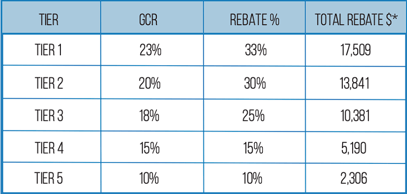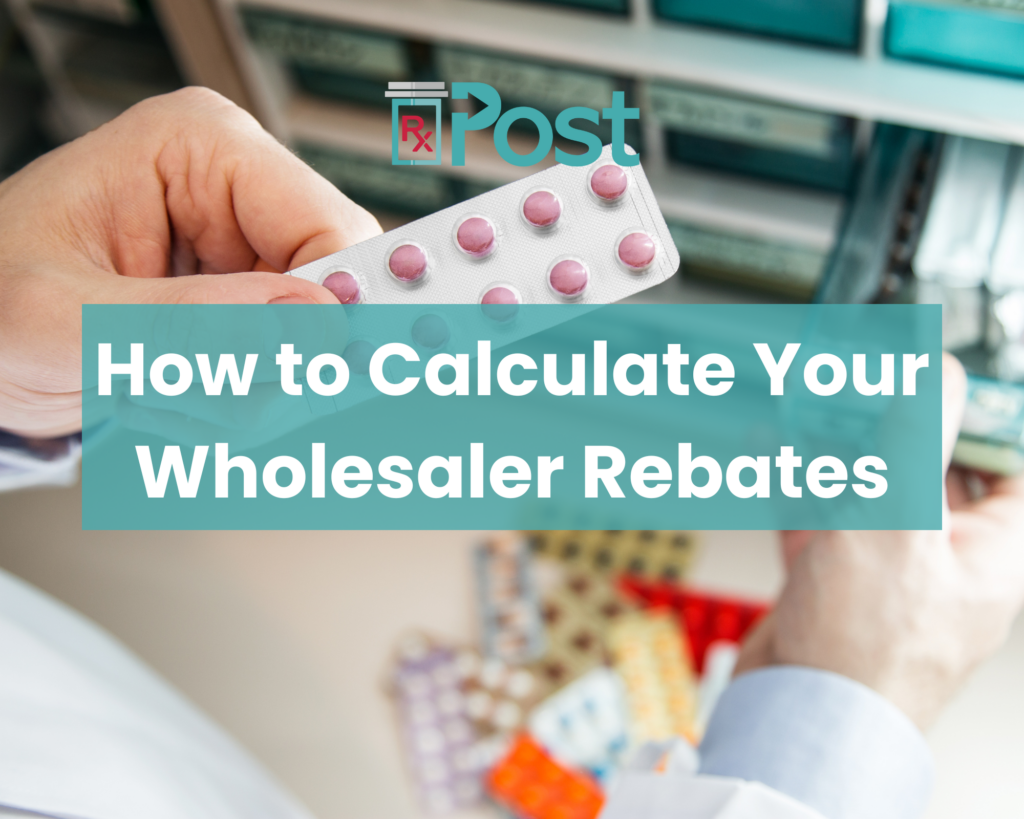In most industries, profit margins are simple: you buy inventory at one price, sell it for a higher price, and then you keep the difference.
But when it comes to prescription drugs, contract conditions and incentives make profits hard to predict. To know how much you’re making in a given month, you have to make complex calculations to determine your pharmacy wholesaler rebate, which affects your net cost of goods.
Because inventory is your biggest expense, it’s critical to know how wholesalers determine your rebates so you can reach your maximum payout. These principles will help you calculate your wholesaler rebate and take control of your pharmacy finances.
What determines your rebate?
What makes your wholesaler rebate so complicated is that it’s not based on one simple formula. There are several terms that can affect your rebate, and changing one affects the others.
To get the highest possible rebate, you have to think about each of these terms and maximize them every single month. These are some of the most common factors used to calculate pharmacy wholesaler rebates:
Generic rebate based on Generic Ratio
Rebates for reaching a specified ratio of generic purchase volume relative to overall Rx volume
Generic rebate based on Generic dollar volume
Rebates for reaching a specified dollar volume of generic purchases
Additional performance/program-related incentives
Rebates based on participation in certain programs or specified performance metrics
Specified contract items
Portfolio of generic contract items that are eligible for a rebate
Designated specialty items
More expensive brand items that factor into incentive structures differently than traditional brand items
Pay terms
Additional discounts based on how quickly the pharmacy pays for the inventory
Total dollar volume commitments
Total dollar amount the pharmacy agreed to commit to purchase from wholesaler
Percentage of volume commitments
Percentage of purchases the pharmacy agreed to commit to purchase from wholesaler
The most important factor in determining your rebate
Out of the litany of factors that have an effect on how your pharmacy wholesaler rebate is calculated, one stands out: the generic compliance ratio also referred to as monthly source compliance or another similar title.
Wholesalers make a bigger profit on generics than they do on brands, so they reward pharmacists for buying more generics. The generic compliance ratio is determined by using a formula that looks something like this:
Generic Compliance Ratio = Generic Purchases / Total Prescription Purchases
There’s a lot of money on the table for pharmacists who maximize their generic compliance ratio. Pharmacists who pay attention to this number can see rebates of more than a hundred thousand dollars in a single year.
Generic compliance rebates are rewarded on a tiered system, which means the more generics you buy, the more you’re rewarded. For example, a wholesaler’s rebate structure might say that if you purchase 10 percent generics, you get a 10 percent rebate. But if you purchase 15 percent generics, you can get a 20 percent rebate. Some wholesalers may offer rebates of up to 35 percent. See the table below as an example rebate matrix for generic compliance.

And rebates aren’t the only incentive. If you meet certain generic compliance metrics, new incentives like deeper brand discounts could kick in and make your pharmacy even more profitable.
Making the most of incentives
Maximizing your contract incentives means walking a fine line between purchasing drugs from the most affordable secondaries and maxing out your potential primary rebate.
Though it may seem counter-intuitive, to get the lowest price of goods, you don’t always need to buy drugs at the lowest prices. You may be able to get an item cheaper at a secondary wholesaler, but that could cost you in the long run.
Because so many primary wholesaler rebates require hitting certain volume commitments, spreading out your purchases across secondary wholesalers could make you ineligible for bigger savings.
In order to keep your pharmacy in the highest rebate tier, keep a constant eye on your purchasing data. If you’re currently at a generic compliance ratio of 19 percent, it’s probably smarter to keep purchasing generics from your primary wholesaler and get yourself into a more profitable rebate tier rather than going with cheaper options at a secondary. The savings you can reap when you achieve that higher tier will probably outweigh the few dollars you’d save on any individual purchase from a secondary.
That doesn’t mean you can never buy secondary items, but it’s critical to be aware of where you stand within your rebate structure before looking outside of your primary wholesaler to save a few bucks.
Securing the best contract
The path to a profitable pharmacy is already bumpy, but profitability is even harder to achieve when you are starting with unfavorable contract terms.
It’s critical to negotiate with your primary wholesaler to get a contract with an incentive structure that works in your pharmacy’s favor. The problem is, as a small independent operation, you don’t have the same sort of leverage as a larger chain.
You can gain negotiating power by joining a group purchasing organization (GPO). When you band together with other pharmacies, you’ll have a bigger potential volume, and wholesalers will work harder to win your business.
Get a better deal with ProfitGuard
Between driving a hard bargain during negotiations and constantly monitoring your purchasing to ensure you’re meeting your contract terms, calculating your pharmacy wholesaler rebate can turn into a full-time job.
With ProfitGuard®, you can take those tasks off your plate and get back to patient care. ProfitGuard takes the uncertainty out of data analytics and does all the monitoring and predicting for you. ProfitGuard’s Navigation Report provides daily purchasing recommendations to ensure you’re maximizing your rebates by maximizing all your contract incentives while also saving money on sticker prices. In other words, it ensures you’re paying the lowest cost of inventory and earning maximum profit.
“The Navigation Report is short and to the point, allowing us to maximize our rebates by allocating purchases to the proper supplier. Now we are able to move purchases … to maximize our generic compliance ratio on both accounts and maximize our rebates,” says Dick Roberts, owner of Eureka Pharmacy
ProfitGuard members have averaged between $70,800 and $212,400 in annual savings on their cost of goods.
“It’s the industry game changer for the independent pharmacy owner or operator,” says Huy Duong, owner of Dale’s Pharmacy in Colorado. “There’s nothing out there like it on the market.”
Original article is taken from PBA Health here.


